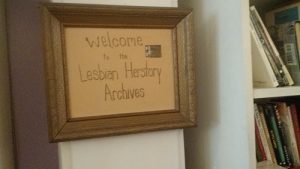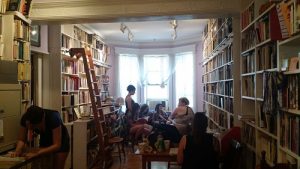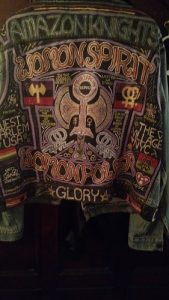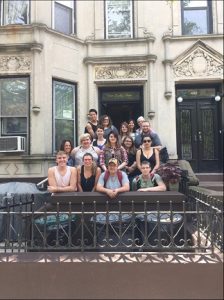The day (Sunday) started off like any other day. We gathered in the morning for a brief group meeting to discuss travel plans. Afterwards, we were set free for an entire day to ourselves in Paris. Some of us went to museums, others went to Versailles & the catacombs, and the rest of us went to take much needed naps before venturing on with our own plans. You might be thinking, “Why take a nap when you have an entire FREE day to do whatever you want in Paris?” Exhaustion had set in for most of us by this point in the trip. (13 students + travel + no sleep = cranky beyond belief) My original plan was to go to Versailles with a few of the other students, but I want to come back to Paris someday, so I thought it’d be best to save it for another time. I went downstairs to take one last stroll through the beautiful French Market before it closed for the day. The market was such an authentic French experience. Many of the people only spoke French, but they were so friendly and willing to let you try their foods to show you how fresh they were. I bought a Nutella-banana crepe, then it was back to the hotel to pack up my things, this way I wouldn’t have to worry about it later on that night.
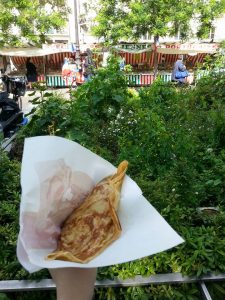
Around the time I finished my packing, our group had received news of the Orlando shooting.
I’ve written the start of this paragraph over and over again several times, but there are no words to express how I feel about this horrific event. Before the trip, I think I would have been sad for the families & friends of those that passed, but I wouldn’t have felt the sense of connection that I do now, knowing some of the beautiful history of this community and having had the opportunity to meet some of the most incredible people that are deeply involved in the LGBT community. This event has shown all of us that you really don’t know when something bad will happen and that we need to cherish every day. My heart goes out to the entire queer community around the world during this time.
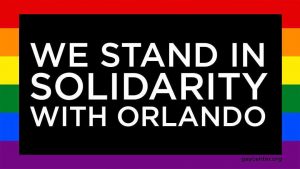
Some of the students that were in the hotel lobby were having a difficult time after hearing the news, so we all went to dinner together to try and get it off our minds for a bit. The absolute best part of dinner was knowing that, when tragedy struck, I had family to hold me and grieve with me, even though I was thousands of miles away from home. I can’t even begin to express how incredible our instructors were to make sure that we were okay before they even considered how they were feeling themselves, which stuck out to me more than anything. As a future educator, they have given me so much to strive for. The way we have all been here for each other during this time is a strong reflection of what the LGBT community is like as a whole. Always sticking together through hard times, grieving together, standing proud together; this community is just unbelievable.
It was an early morning (Monday) getting up at 4:45 am to head to the airport. Who knew traveling meant lack of sleep?! Once we checked our bags and went through security, (a super simple process – surprisingly) we patiently waited to board our plane. Most of us took naps in the waiting area since we had roughly 1.5 hours until our plane boarded. As our boarding time grew closer, I became somewhat anxious because they were pulling people aside as they were boarding to check through their things and pat them down. Lowell let me know that not everyone goes through it. They typically only select “random” people to check. Fortunately for our group, none of us were selected. The plane ride was long (7ish hours – I was able to watch at least 4 movies during that time) and a little rougher than usual. Luckily, on long flights, the airline provides you with a small flat pillow, a paper thin blanket, questionable meals, and a screen to watch the latest movies on, if you so please. The landing was bumpy, but we made it. It turns out, customs wasn’t as terrifying as I expected it to be. It was actually quite simple and took the least amount of time. Once we finished with customs, we had to get our bags, recheck them, and wait to board our second plane for the day. The second plane was SMALL. It was only 3 seats wide, the side with one person on it didn’t even have overhead bins. This flight was short and I napped for most of it.
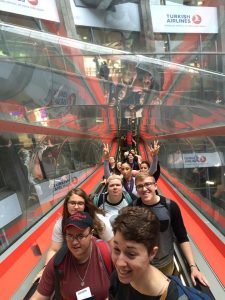
Adjusting to the United States has been kind of weird. I never thought that I’d have to adjust to my home: the shower, the toilet, talking to my friends or people in public, etc. I’ve struggled so much with the language barrier for the past week and it’s weird that I will no longer have that problem. Overall, the adjustment has been pretty easy, but I still can’t order food without saying “merci” when I finish.
After reflecting on this trip, I can tell you that the past few days have been difficult for me. My feelings about leaving have been mixed; one part of me is happy to be home, the other part is heartbroken that this wonderful trip has come to an end. But I think that even though this trip has ended, this is not the end for our group. Our time has come to stand up and make a change. We will take what we have learned about queer history and spread it like wildfire. The LGBT community will be a huge part of our lives and the connections that we have made on this trip will last a lifetime.

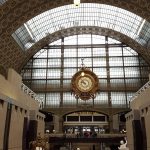
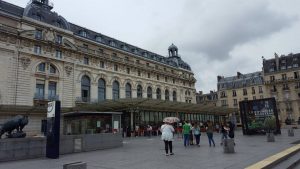
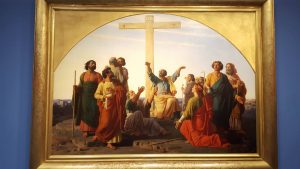
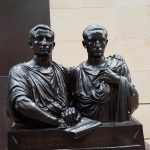
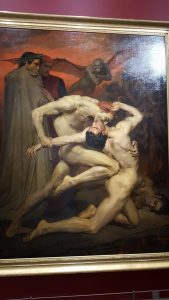
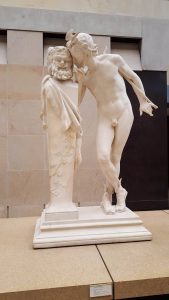
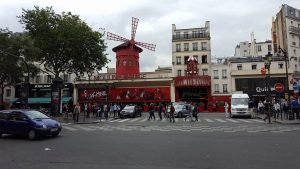
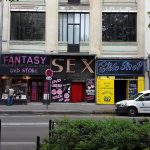
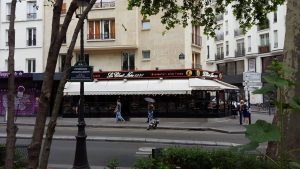
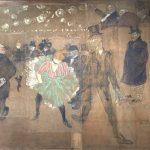
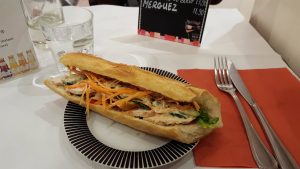
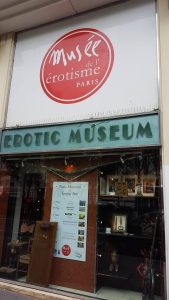
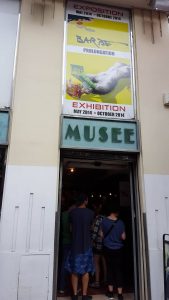
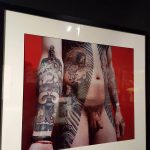
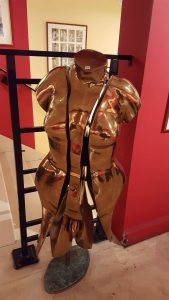
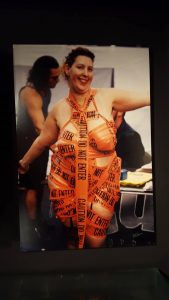
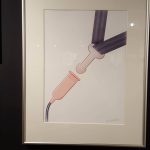
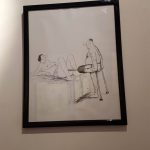
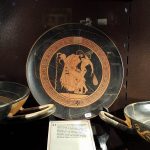
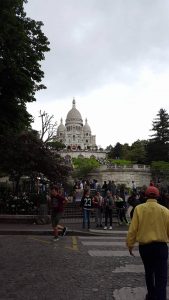
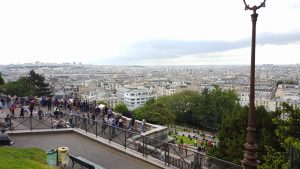
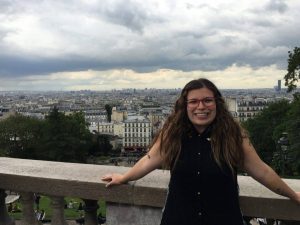
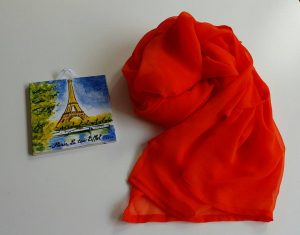
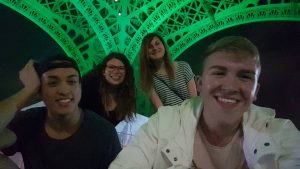
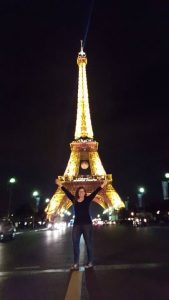
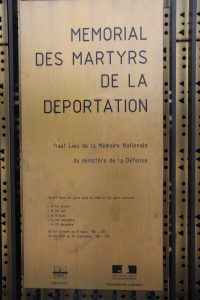
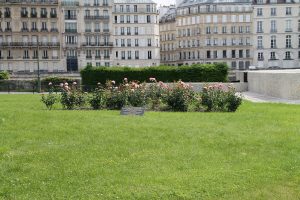
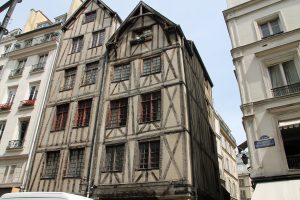
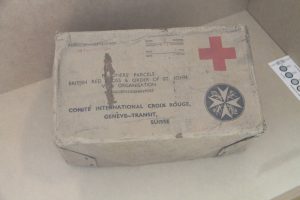
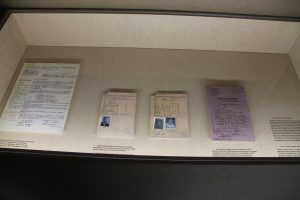
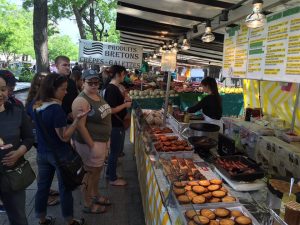
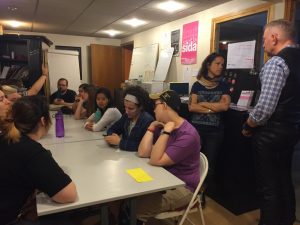
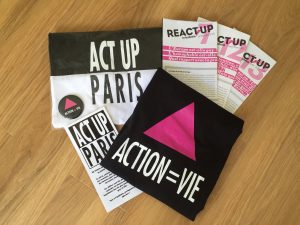
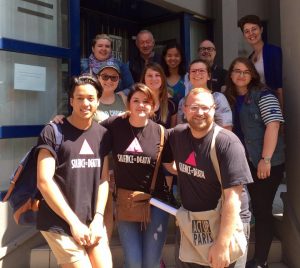
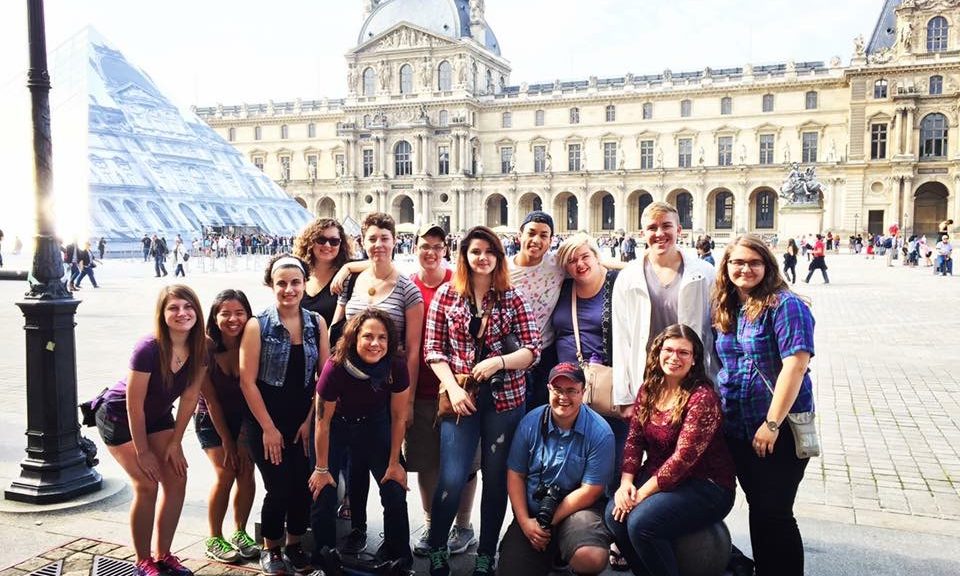
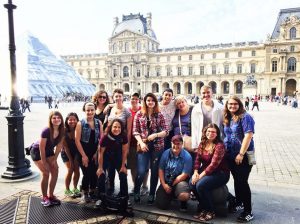
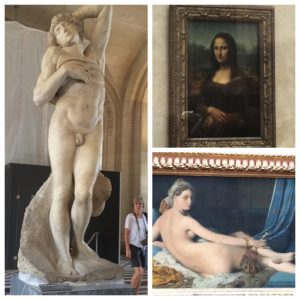

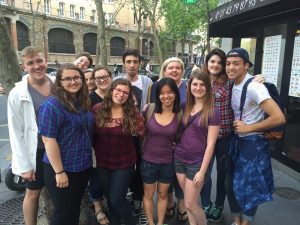
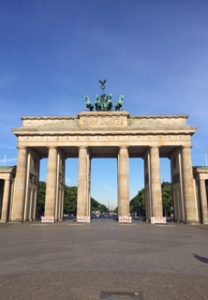
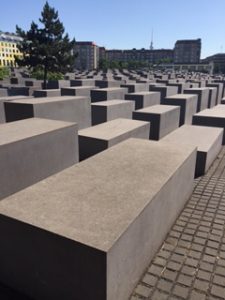

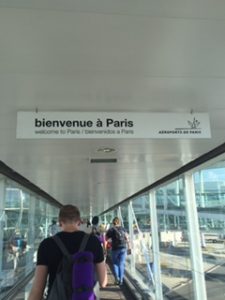
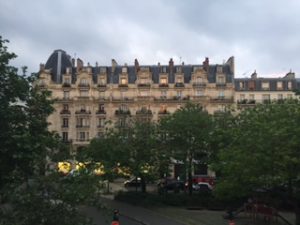
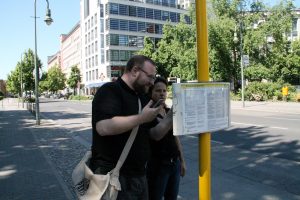
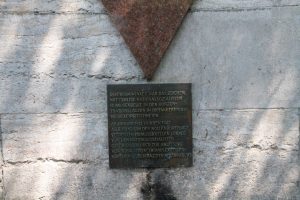
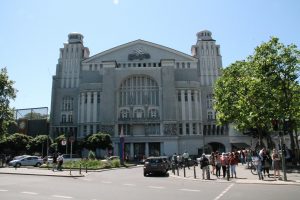
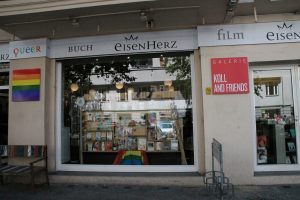
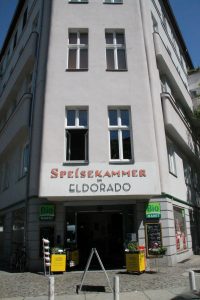
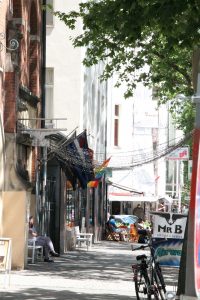
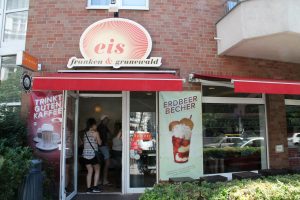
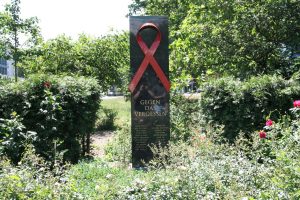
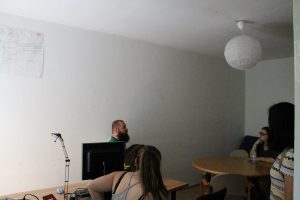
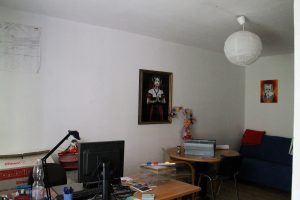
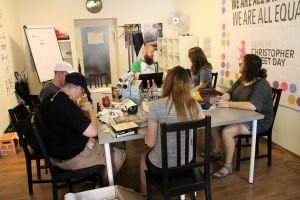
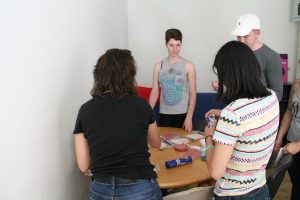
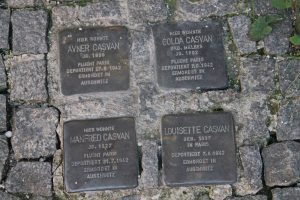
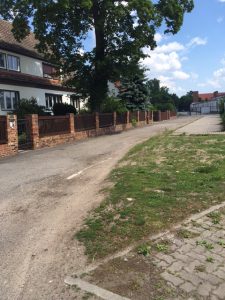
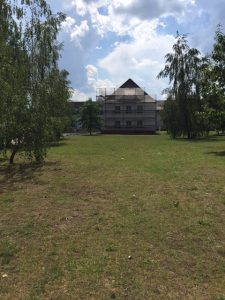
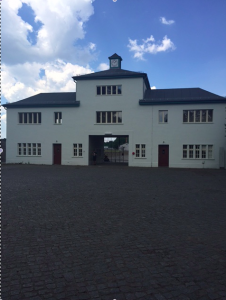
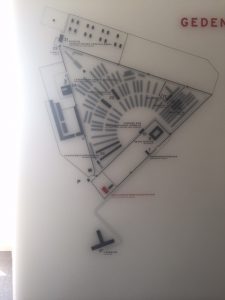
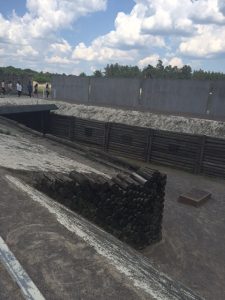
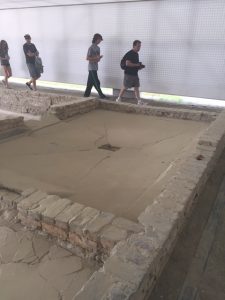
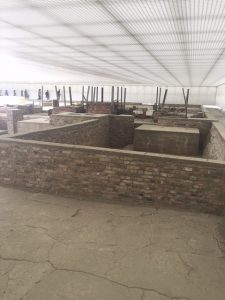

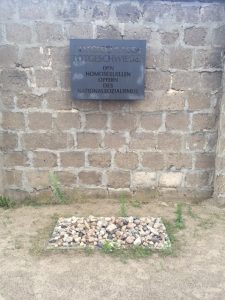
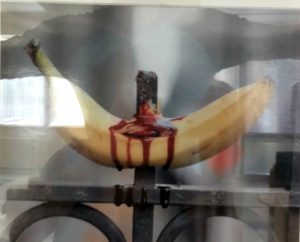 Our final full day in New York City started with an analysis of the photograph on the left, which we quickly bestowed the title of “End of Patriarchy”. The title seemed to be a fitting start to the day given the repeated motif of social justice, activism, and civil disobedience throughout our week in NYC.
Our final full day in New York City started with an analysis of the photograph on the left, which we quickly bestowed the title of “End of Patriarchy”. The title seemed to be a fitting start to the day given the repeated motif of social justice, activism, and civil disobedience throughout our week in NYC.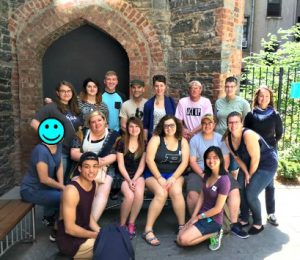
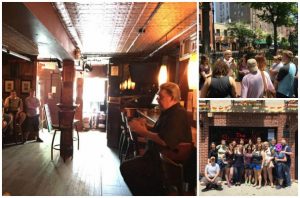 Following our conversations with Michael and Jim, we ventured over to Greenwich Village to the historic Stonewall Inn. Upon arrival, myself and two other trip participants presented on the historical context of the Inn, including the Stonewall Riots, and how the riots changed the gay community irrevocably. Listening to Tree Sequoia, current bar tender at the Stonewall Inn, speak to his experiences as a young man who used to frequent the Stonewall before the raids was an incredibly enlightening experience. Though Tree is 77 years old today (31 if you like ’em young), he speaks about life before the riots as if it were yesterday. “It was a better time, in my opinion. At least, it was more fun,” Tree reminisced, talking about bribing the police, working at a bar under the control of the mafia, and the constant, invigorating risk of attending a bar regularly raided by the police.
Following our conversations with Michael and Jim, we ventured over to Greenwich Village to the historic Stonewall Inn. Upon arrival, myself and two other trip participants presented on the historical context of the Inn, including the Stonewall Riots, and how the riots changed the gay community irrevocably. Listening to Tree Sequoia, current bar tender at the Stonewall Inn, speak to his experiences as a young man who used to frequent the Stonewall before the raids was an incredibly enlightening experience. Though Tree is 77 years old today (31 if you like ’em young), he speaks about life before the riots as if it were yesterday. “It was a better time, in my opinion. At least, it was more fun,” Tree reminisced, talking about bribing the police, working at a bar under the control of the mafia, and the constant, invigorating risk of attending a bar regularly raided by the police.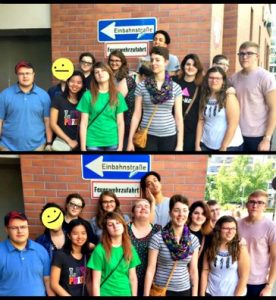 airline meals, and an entire book later (If I Stay by Gayle Forman, a great book if you’re looking for a tear-jerker!), we landed in Berlin, exhausted, but excited to be on the next leg of our program!
airline meals, and an entire book later (If I Stay by Gayle Forman, a great book if you’re looking for a tear-jerker!), we landed in Berlin, exhausted, but excited to be on the next leg of our program! stark reminder of the context of the wall, seemed to be a memorialized in a peaceful way. This reminded me that the Germany we visit today is not the same Germany I learned about in middle school, something I hadn’t realized I’d been nervous about up until that moment. Of course, I knew that WWII was over, that Nazi Socialism had come to an end, and that the work and death camps had been liberated long before I was born, but I’d never really learned about present-day Germany, up until I found myself here in Berlin.
stark reminder of the context of the wall, seemed to be a memorialized in a peaceful way. This reminded me that the Germany we visit today is not the same Germany I learned about in middle school, something I hadn’t realized I’d been nervous about up until that moment. Of course, I knew that WWII was over, that Nazi Socialism had come to an end, and that the work and death camps had been liberated long before I was born, but I’d never really learned about present-day Germany, up until I found myself here in Berlin.